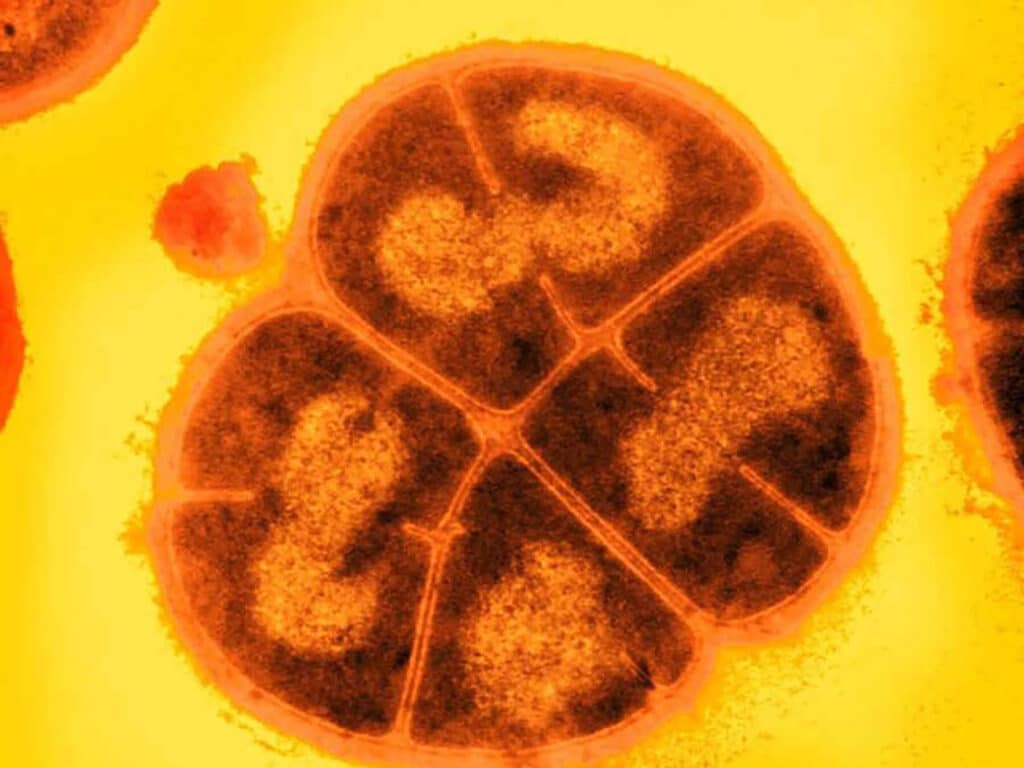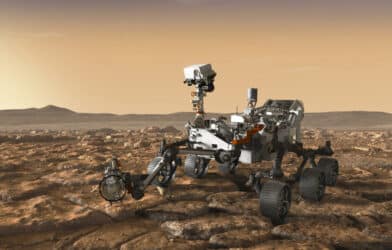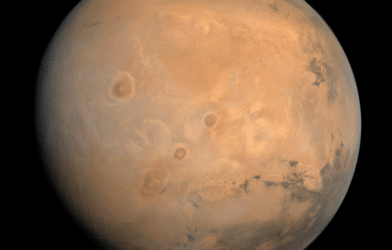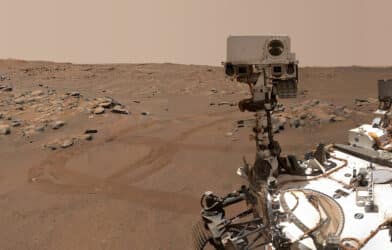Deinococcus radiodurans. The Deino (Deinos) prefix and Coccus (Kokkos) suffix is Ancient Greek for “Terrible grain/berry”. Radio and Durans are Latin for “Radioactive enduring”. Guinness Book of World Records registered D. Radiodurans as the toughest bacteria known in existence.
It may even be bulletproof, a theory I’d love to test. For science, of course.
This particular bacteria is the most radioactive-resistant and toughest-surviving strain known to man and we know it as “Conan the Bacterium.” This type of bacteria is known as a “polyextremophile” meaning it is resistant to extremes on multiple fronts of oppression and is one of the most resistant types of bacteria to science.
It can survive being dunked in acid, freezing vacuum, arid dehydration, artillery barrages of deadly radiation, and all the other Arnold Schwarzenegger-like qualities one could dream of. It might even resist being shot at by ballistics like a T-800 Terminator unit.
When Mars’ first samples returned to earth they were subjected to a battery of tests. Brian Hoffman and Ajay Sharma of Northwestern University found through a new-of-its-kind study that this bacteria can survive seemingly everything thrown at it.
The researchers simulated the conditions on Mars for such results. Besides the wonder of how we could even replicate such conditions on Earth hits you, let this sink in further: Mars is on average -80 degrees Fahrenheit, solar-breeze swept with radiation (you can listen to the Rover Perseverance’s sound captures, yes, sound on Mars!), and hit with licks of solar flares.
It’s a miracle anything even survives here to our standards.

Deinococcus Radiodurans is once again shattering a record thanks to recent findings. Not only is it ridiculously resistant, but it could also be able to live for over 200 million years if buried and tucked away from the rich ionizing and radioactive conditions of Mars.
A big question pervades the science community about when tourism and astronauts arrive and are exposed to Mars’ conditions. Long term, how will our cross-contamination work? Will we be sickened? Will we sicken the planet further with our hitchhiker bacteria?
In War of the Worlds, the unstoppable alien vehicles that sewed terror into the hearts of readers and the book’s characters alike found that when the malevolent beings tried to expose themselves to our atmosphere they died quickly.
[SPOILER ALERT!]: The aliens died from being exposed to our atmosphere and our bacteria and germs. They lived a too-sterile life in their conditions to survive our Earth’s conditions.
“Our model organisms serve as proxies for both forward contamination of Mars, as well as backward contamination of Earth, both of which should be avoided,” explains Michael Daly. Leading the research team, Daly is a professor of pathology at Uniformed Services University of the Health Sciences (USU) and member of the National Academies Committee on Planetary Protection.
“Importantly, these findings have biodefense implications, too, because the threat of biological agents, such as Anthrax, remains a concern to military and homeland defense,” he adds.
“We concluded that terrestrial contamination on Mars would essentially be permanent — over timeframes of thousands of years,” notes Hoffman, the senior co-author of the study. “This could complicate scientific efforts to look for Martian life. Likewise, if microbes evolved on Mars, they could be capable of surviving until the present day. That means returning Mars samples could contaminate Earth.”
The idea that a bacteria could be so resistant to quite literally everything that can kill a human is equally titillating and frightening. This depends on how it and we might affect each other, how it may evolve, and how it might interact with our bacteria ecosystem on Earth, and vice versa.
The research is published in the journal Astrobiology.












